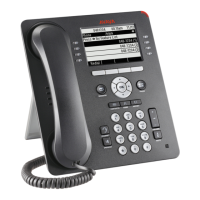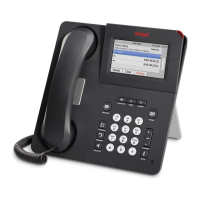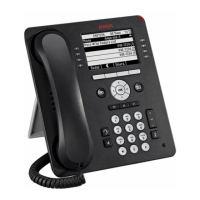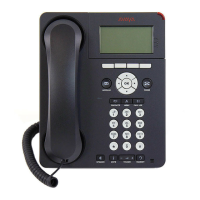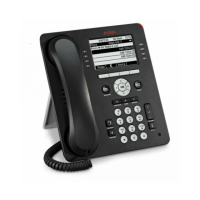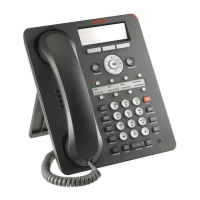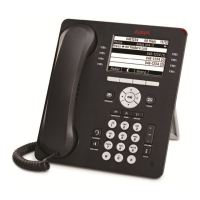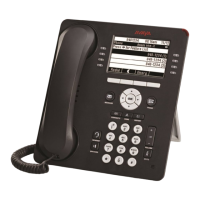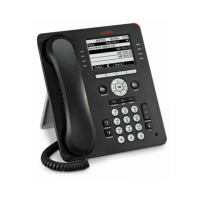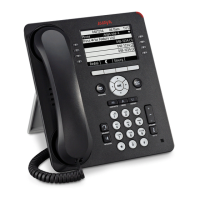LLDP Troubleshooting
Issue 1 August 2010 75
LLDP Troubleshooting
If the “Waiting for LLDP” message appears for more than a few seconds, it generally indicates a
problem with getting a value for the Call Server IP Address. This can occur due to incorrect
settings in script files or in the way the network has been configured.
When the telephone boots, it expects to find a valid IP Address for the Call Server. This value,
known as MCIPADD, can come from several sources:
●
A static or manually programmed address on the phone.
●
The 46xxsettings.txt file MCIPADD setting.
●
A DHCP offer using option 242 that includes the MCIPADD setting.
●
Link Layer Discovery Protocol or “LLDP.”
If the telephone cannot find MCIPADD through any of these means, it will fail to register with the
Call Server and will display the “Waiting for LLDP” message several times before
rebooting. For example, if the MCIPADD value was specified in the 46xxssetting file and the
network file server fails, the telephone will not be able to read the MCIPADD value or any of the
46xxsettings file parameters. Therefore, this method of providing MCIPADD is not
recommended.
A more robust way to provide this value is to use DHCP. The DHCP server can be administered
to provide MCIPADD using DHCP Option 242. (Note that TLSSRVR, HTTPSRVR and
L2QVLAN can also be administered using this option). Telephones using non-static addressing
automatically do a DHCP request (Option 242 is the 96xx default DHCP offer) and may get
MCIPADD (and other addresses) this way.
Another reason for receiving the “Waiting for LLDP” message is that both the HTTP and HTTPS
Server IP Address is not administered. To administer the HTTP and/or HTTPS server, use the
Craft ADDR procedure and enter the correct HTTP and/or HTTPS File Server IP Address in the
File Server field.
An alternative protocol known as LLDP can also supply call server and file server (HTTP and/or
HTTPS) IP Addresses. This IETF standard protocol requires the network to be equipped and
configured to support LLDP. With LLDP in the network, HTTP and/or HTTPS Server and Call
Server IP Addresses can be provided using proprietary TLVs (Transport Layer Values) to pass
information to the telephones. See the Avaya one-X™ Deskphone H.323 Administrator Guide
for detailed information about LLDP processing.
LLDP Setup/Troubleshooting Steps
For manually (statically) programmed telephones use the Craft ADDR procedure to set the Call
Server to a valid IP Address. Static Addressing Installation
covers the ADDR procedure in
detail.

